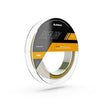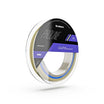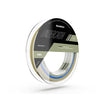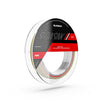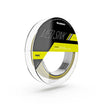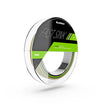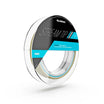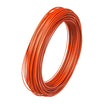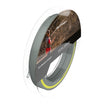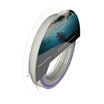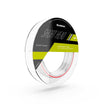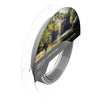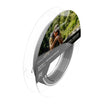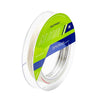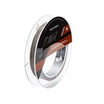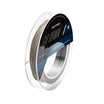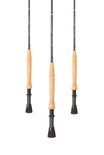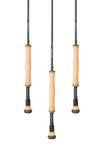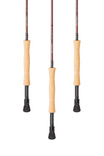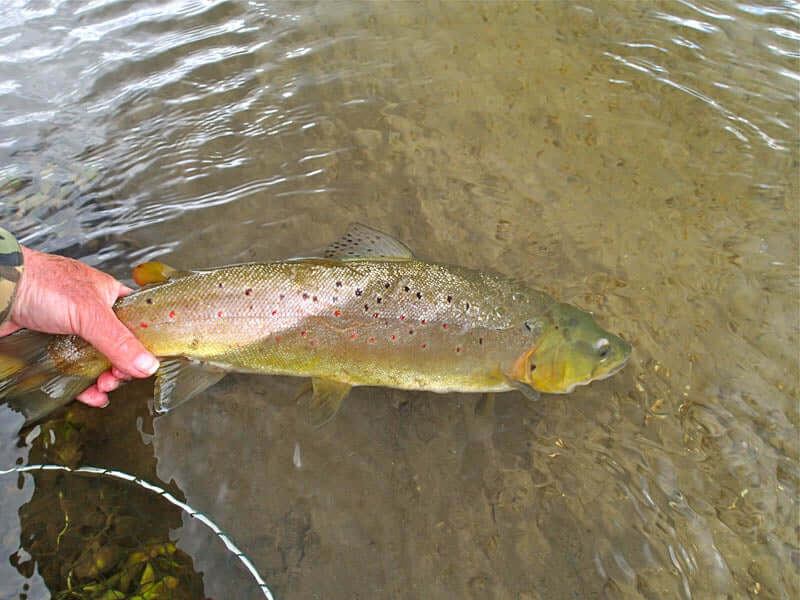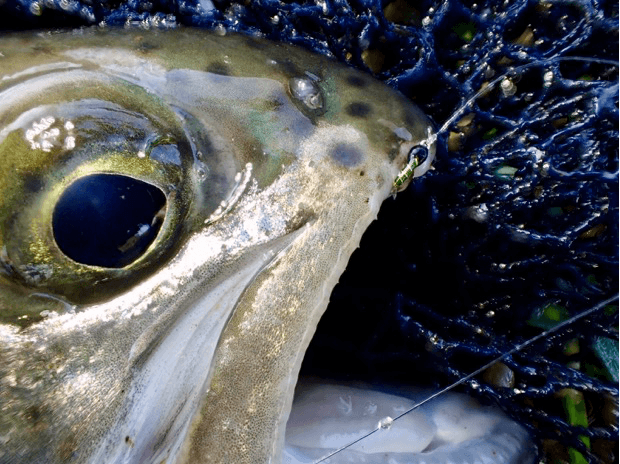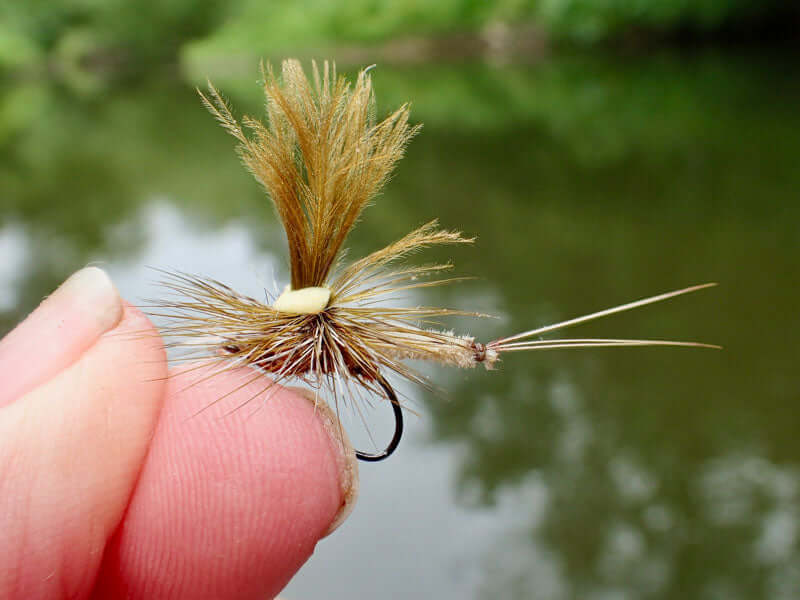by Dave Southall
Do you avoid fly fishing when it is very windy? Do you struggle to cast on windy days, particularly when casting into the wind? Does the wind affect your casting accuracy? We all ‘suffer from wind’ at times but there are many situations when the fish feed well on the windiest of days. In order to exploit these situations we must learn to cope with wind, even to look forward to windy days. Let me relate some situations when I have fished in very windy conditions in order to enjoy top notch fishing & how I managed to cope.
Some of the best fishing on the heavily tree-lined small streams of my local North Yorks Moors is in spring & through the summer on the windiest of days, preferably 25mph or more. Under these conditions I know that the river surface will be covered with debris dislodged from the overhanging alders, sycamores & willows. Amongst the leaves and twigs I know there will be large numbers of aphids, beetles, caterpillars and wood ants to which the fish will be avidly rising.
A few years ago on a very windy day in early May I visited Pickering Beck in North Yorkshire. Arriving there I discovered a river that was heavily coloured after overnight rain & the surface was plastered with freshly opened leaves & even branches that had been ripped off the trees by the gale. Why I had decided to fish on such a wild day I really don’t know but fortunately I saw a fish rise in the slow water above the mill, then another riser & another. On investigation the dislodged leaves were covered with aphids & so was the river surface. In between dodging falling debris I caught over 20 brown trout that were gorging on the glut of aphids. Casting my size 24 CdC IOBO Humpy accurately was challenging but the fish had no problem seeing my small fly in the heavily coloured water.
In the late spring of 2019 the weather forecast predicted winds gusting at 45mph & I decided to visit a section of the R. Seven on the North Yorks Moors that is sheltered within a limestone gorge & has heavy tree cover. The wind above was howling & once again the surface was covered with leaves, leaf-buds & flowers from the sycamore trees. This time casting was not a problem but seeing my size 30 CdC Aphid amongst the floating debris was not easy. The trout were so focused on the tiny aphids that they refused my usual size 24 imitation. Over 30 wild brown trout fell to my tiny offering.
On another small North Yorks Moors stream, the R. Derwent, beetles are a significant part of the trouts’ diet & windy days are a great time to visit the heavily wooded sections of the river that are in Langdale forest. Beetles, caterpillars & wood ants all get dislodged from the overhanging trees when conditions are wild.
On more exposed waters like my local Driffield Beck chalk stream wind can funnel food onto the leeward banks & into sheltered pockets. On the afternoon of the 25th of September 2020 I visited the Mulberry Whin section of Driffield Beck for a walk. The wind was gusting at 40 to 50 mph & it was a cool 11 degrees C & showery. Although the five beats had all been booked no one had arrived, all put off by the weather. However there was a good hatch of Small Spurwings & in one corner the wind was funneling them into a concentrated line against the nearside bank. Several fish were avidly rising to the duns which were lingering on the surface, unable to get warm enough to take to the air, making them very vulnerable. I returned to my car & set up my 10’ 4 weight Sunray Microlite rod with 3 weight Sunray Clear Floater line & a 14’ leader (rather long for the conditions). I had to cast into the wind & by casting between wind-gusts I managed to tempt 4 brown trout, best 20” long, from the pod of risers. They were so preoccupied with the concentration of Small Spurwing duns that they did not spook for long when I caught one of their number. The hatch only lasted half an hour, stopping abruptly when the showers stopped & the sun came out.
The same is true on lakes where surface food is blown to leeward shores & into the calm areas known as wind lanes. On a cold (4 degrees C) March day at my local Wansford Lake the strong north-westerly wind was funneling up the inlet area against the flow of this canal-like fishery, locking the emerging midges where the wind blown ripples met the calmer flow coming from the inlet. The midges were too cold to lift off the surface & thousands were trapped in the seam between the rippled water & the calmer inflow. The stocked rainbows were like a wolf pack, gorging on the midges & I had a bonanza fishing with a size 24 CdC IOBO Humpy.
Casting in wind can be a real nightmare but there are ways to reduce the problems to an acceptable level
- Side casting, particular the Italian style Totally Under the Tip Cast which generates very high line speed & tight loops, helps to get under the wind as wind speed drops dramatically close to the ground/water surface due to friction. One of my biggest Driffield Beck trout, a fish of 4lb 14oz was caught on a day with the wind speed averaging over 30mph & gusting at over 40mph. By using a short, fast actioned 7’ 6” Italian Style rod, 3 weight DT line & custom tied 16’ Italian Style leader I managed to cast my tiny CdC fly at 45 degrees into the wind to the fish that was rising against the far bank. The Italian Style of casting is a real Godsend in windy conditions as the fly is aimed at the water rather than above it, thus reducing the chance of the wind blowing the fly off target.
- Whilst I have come to prefer rods with a softish, progressive action for most of my fishing, when casting in a strong wind I find that a short, crisp actioned rod is a more suitable tool for the job as mentioned above. The short relatively stiff rod cuts through & beneath the wind & generates very tight loops when required.
- Sunray’s Micro-Thin lines being thinner & more dense than other ‘plastic’ lines slice through the wind far better & even in seriously windy conditions I never fish with a line heavier than 3 weight.
- Agressively tapered leaders like those designed for the Italian Style of casting are a considerable help when casting into the wind & I shorten my tippet lengths from their usual 5 to 6’ down to 3’ or even less.
The formula for the Italian leader is as follows:
0.5mm 180cm Maxima
0.4mm 90cm Maxima
0.3mm 60cm Maxima
0.2mm 30cm Maxima
0.16 to 0.12mm tippet 140cm Stroft or tippet of your choice. In calm conditions a longer tippet can be used.
Total length 5m/16.4’
- If fishing with a fixed line Tenkara rod in windy conditions I use Tungsten Tenkara line since it is much thinner than fluorocarbon & so is less influenced by the wind whilst holding the line off the water/high-sticking.
So don’t let wind put you off fishing. Windy days can be some of the best.

- Heavy tree-cover on a North Yorks stream, perfect for a wind day.

- A very windy day on the normally placid Driffield Beck.

- The 4lb 12oz trout caught against the far bank on the very windy day.



